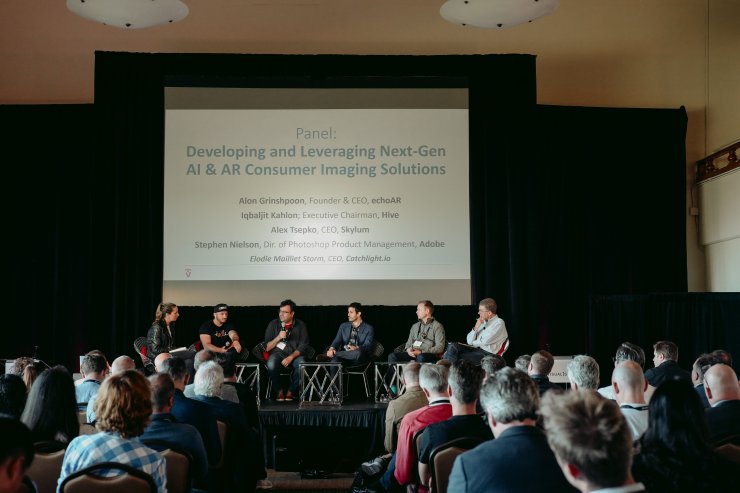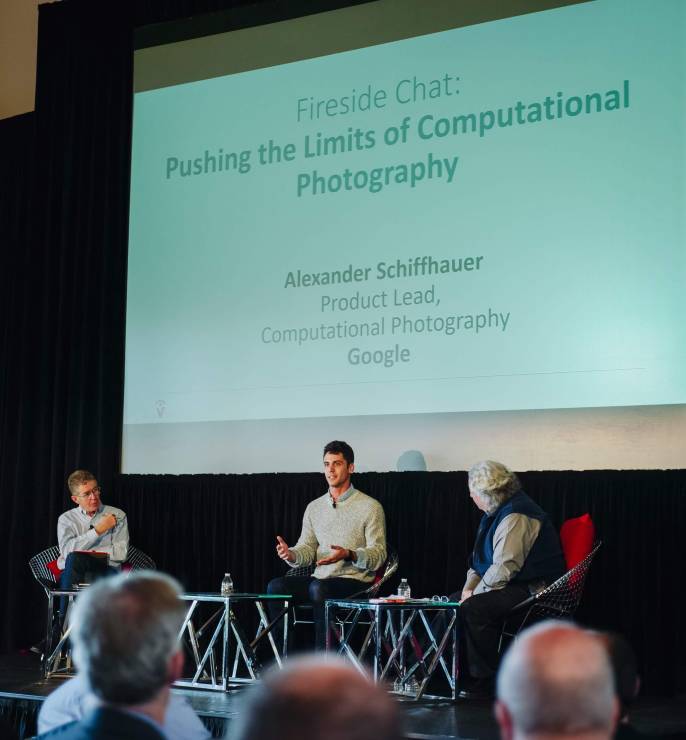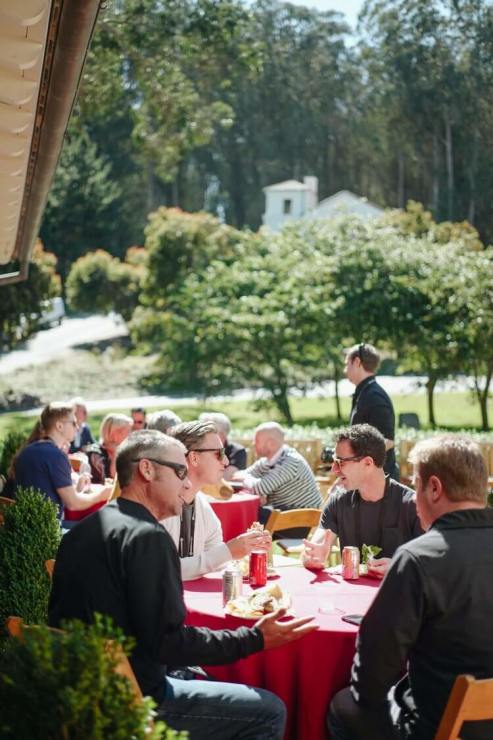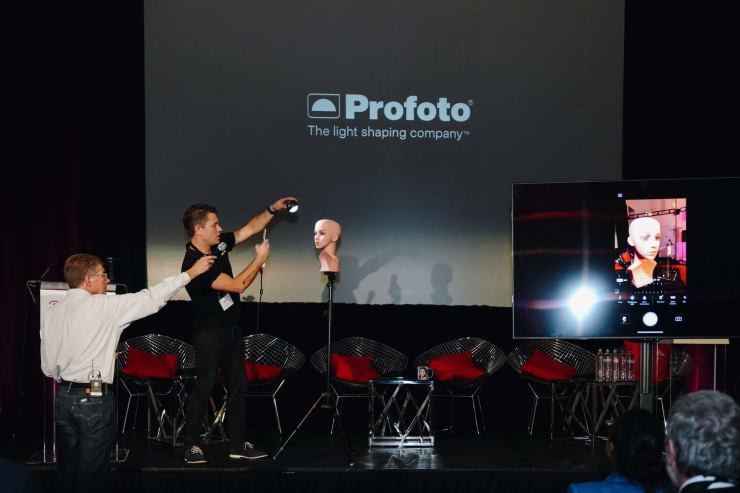After a virtual version of the Visual 1st Conference last year, co-chair Hans Hartman and the team are back at it, creating a in-person experience for those looking to hear from innovative thought leadership on a variety of topics in the photo and video space.
I had the chance to sit down with Hans, and ask him a few questions about this year’s conference, held Oct. 4-5, 2022 in San Francisco.
In addition to Hans, the conference features hosts Alexis Gerard, Elodie Mallet Storm and Rich Harrington, alongside presenters like Javier Ideas, Dan Hamer-Hodges, Rudy Burger, Sarah Lefebvre and more. You can learn more about the conference and see its full program at visual1st.biz.
What is the Visual 1st Conference? What can attendees expect?

“Visual 1st is an annual conference focused on promoting innovation and partnerships in the photo and video industry, bringing large industry player executives together with innovative entrepreneurs at startups. It’s also very much a cross-Atlantic conference, with roughly 30% European and 70% North American participants.
“Attendees will hear from though leaders in 1-on-1 fireside chat sessions, panels and three Show & Tell demo sessions. It’s also very much a networking conference, with receptions on both evenings of the 1.5-day conference.”
What are some of the panels that you’re most excited to hear?
“It’s hard to pick a favorite, but I’d say our Empowering Shopping — Seizing emerging opportunities where visual content is king panel is a great one. More and more photo and video product developers are starting to build solutions that enable brands to better leverage photos or videos to sell their products.
“For instance, Stitch Fix got quite a bit of press recently, as they are experimenting with generative AI to create images from just text prompts, which their photo stylists then use to visualize the fashion products they’d recommend to their customers to buy.”
NFTs are getting a ton of attention, but there’s also a lot of interest in AR and AI technologies. Where do you see the photo industry in a few years from now?

“It’s amazing how fast things are changing, which makes it also hard to predict. A year ago everyone was on the NFT bandwagon, and now we’re already in the phase of disillusionment, not in the least because the bottom fell out of the crypto market — and who knows if that will bounce back anytime soon. Today generative AI is the topic de jour.
“I think two trends will continue and increasingly impact the entire photo & video industry. One obvious one is AI – and that is already shaking up all kinds of different part of the photography value chain, from capture (computational photography that is making non-traditional cameras, most importantly, smartphones better and better), to enhancement (all the way to automatic masking, AR effects, upsampling of low-res images – you name it) to curation and culling (smart selections of photos that matter most).
“Another one is the increased fragmentation of photo sharing solutions. It’s no longer the big social media networks that cornered the photo and video sharing market. On one hand, Facebook/Instagram and Twitter are losing their appeal, especially to younger users. Consumers as well as pro photographers are now attracted to innovative new alternatives. Take BeReal, for instance, which completely changed the metaphor of serendipitously sharing photos. Or VSCO, one of our panelists, which decided to go back to its roots by focusing on addressing the needs of the more serious photographers rather than chasing eyeballs for their apps.”
What do you think are the industry’s biggest challenges at the moment?
“I would say the #1 challenge today for more or less every industry player except Apple is the spiraling customer acquisition costs for new users. With Apple’s App Tracking Transparency policy, online ads have simply become less efficient, i.e. the costs to recruit new user is spiraling.
“This affects startups who in the past could afford supplementing their guerilla marketing/PR efforts with targeted Facebook ad buys that would easily pay for themselves; now that is a lot harder. But it also affects the big guys, like Snap, in terms of what they can now charge for their advertisements.”
How can photographers innovate using today’s (and tomorrow’s) technologies? How do they need to evolve to take that next step?
.mgl-tiles { display: none; } #mgl-gallery-634eb3809d625 { margin: -5px; width: calc(100% + 10px); } #mgl-gallery-634eb3809d625 .mgl-box { padding: 5px; } @media screen and (max-width: 768px) { #mgl-gallery-634eb3809d625 { margin: -5px; width: calc(100% + 10px); } #mgl-gallery-634eb3809d625 .mgl-box { padding: 5px; } } @media screen and (max-width: 460px) { #mgl-gallery-634eb3809d625 { margin: -5px; width: calc(100% + 10px); } #mgl-gallery-634eb3809d625 .mgl-box { padding: 5px; } }
Photo by SweetEscape HQ
Photo by SweetEscape HQ
“The good news: Many technology innovations occurring right now enable photographers to be more efficient with all kinds of capture, curate/cull, enhance, image management/storage/backup tasks. These solutions allow photographers to focus on what they are best at: using their creative instincts to take compelling photos.
“For their next step, ultimately the pro photographers’ competition is DIY smartphone photographers. While the pro’s creative eye continues to be a major differentiation, the AI-based enhancements in smartphones will narrow the gap between what pros vs. causal amateurs can produce. An extra boost of differentiation could come by having specialized equipment and knowledge that the casual amateur not likely has.
“In the past this was DSLRs (plus expensive lenses and lighting equipment) vs. mediocre smartphone cameras. Today that gap is less impressive. Areas I suggest serious photographers to explore now is pro photography with drones, 360 cameras or perhaps action cameras.
“In addition, taking and editing keepsake long-form videos is still too complex for most casual photographers. It might take a bit of a learning curve even for advanced photographers, but they already own most of the equipment needed for taking and editing serious videos.”
Want to learn more about the Visual 1st Conference and reserve your ticket? Visit visual1st.biz today!
Tell your story with the second annual Visual Storytelling Conference!
Experience four days of interactive, online training sessions featuring a range of educational content with experienced photographers and content creators. This free event kicks off with a series of technical boot camps to build essential skills, followed by live, online sessions on photography, video, business and social media. Join live from March 10-13, 2022!
